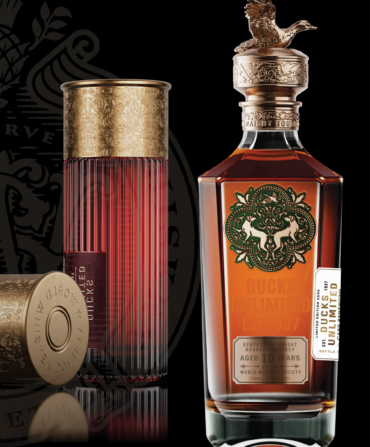Two large pet kennels sit on the bow of Chris Crolley’s school bus pontoon boat—aptly named the Pelican—as it chugs slowly toward the mouth of Shem Creek into the Charleston, South Carolina harbor. Holes in the crates’ plastic reveal the curve of feathered heads and the dramatic plunging lines of impossibly long bills. The air intermittently fills with a soft shrieking that sounds vaguely prehistoric. “Today is a celebration,” says Crolley, the founder of Coastal Expeditions canoe and kayak tour agency. He’s a naturalist and conservationist who skews philosophical—especially at times like these, when his life’s work protecting this area’s coastal habitat converges in the form of two rehabbed eastern brown pelicans ready for release.

“Where did these birds come from?” Someone on the boat asks. The short answer: After the pelicans contracted an internal parasite from a bad food source in Myrtle Beach, the team at the Center for Birds of Prey in nearby Awendaw nursed them back to health. But Crolley’s penchant for the existential causes him to look past the mundane. “A better question,” he offers, “would be when they come from.”

Brown pelicans, like all birds, he explains, are leftover dinosaurs, descendants of those who survived the fifth great extinction. Built for life along coasts, pelicans forage by plunging into the ocean from above, expanding their throat pouches to trap fish, along with a few gallons of water. Fast-forward some thirty-six million years to the 1960s and 1970s, when the insecticide DDT nearly drove them extinct (along with bald eagles and many other raptors) before it was banned and the Environmental Protection Agency was formed. In that way, the species is a conservation success story, but like all other seabirds, they now face another serious threat from what Crolley calls “coastal squeeze,” the ever-decreasing availability of habitat due to human development on spaces already under pressure from sea level rise.
South Carolina Department of Natural Resources (SCDNR) wildlife biologist Janet Thibault estimates that on average, 5,400 pelican pairs nest in the state annually. That’s almost forty percent of all the brown pelicans that nest along the Atlantic coast, making South Carolina a key site for their protection. Earlier this year, to celebrate all that the bird symbolizes, Crolley teamed up with elementary students at local school Ashley Hall to spearhead an effort to have the eastern brown pelican named the state seabird. In May, the bill passed, sponsored by state representative Spencer Wetmore.
It’s all led up to today, on Crolley’s boat in the Charleston Harbor. Soon after the human buzz of Shem Creek’s waterfront restaurants and bars fade, the release site, Crab Bank, comes into view. One of seven state-designated seabird sanctuaries, Crab Bank is a slip of a barrier island, just over thirty acres of sand shifting with the tides—a place, stranded between Shem and Fort Sumter, that’s just for the birds. Like the pelicans themselves, Crab Bank represents another thing almost lost. In 2017, Hurricane Irma completely washed away the already-eroding island. But the nonprofit arm of Crolley’s business, the Coastal Expeditions Foundation, joined forces with SCDNR, the Coastal Conservation League, and other organizations to lead a push to divert some of the sand from the deepening of Charleston Harbor to rebuild the barrier island, which is now managed under the watchful eye of SCDNR.
“It’s some of the most important environmental work that I will have a chance to touch in my lifetime,” Crolley says. Immediately after Crab Bank’s revival in December of 2021, birds began reclaiming the little strip of earth that had so long hosted them.

Now, nearly three years in, “it’s regaining the feel of a barrier island,” Thibault says. The plant community, including sea oats and croton, has returned. She has documented nesting from American oystercatchers, black skimmers, state-threatened least terns, and even Wilson’s plovers, among other species. “It’s pretty amazing that these birds are nesting so close to the public in Mount Pleasant’s backyard,” she says, “and that people can see them raising their young.” Next spring, she is hopeful that due to the growing plant community, pelicans—who need structure and vegetation to build their stick nests—will also raise chicks on Crab Bank once again.

Although the two pelicans in Crolley’s care likely won’t nest for a few more seasons, they will hopefully call the area home after today—timing that Crolley sees as a manifestation of some cosmic thread. “These birds are here for the naming of the species as the state seabird and for the resurgence of pelican nesting on Crab Bank,” he says before opening the door of one cage. “They are right on time.” The first pelican tentatively steps out in the late afternoon sun, prancing nervously and eyeing the open water below. After a few minutes, Crolley decides that maybe releasing the other pelican simultaneously will give the bird a boost of courage. Together, the young pelicans stand on the bow. “Coming at you live and rehabbed from thirty million years ago,” Crolley says with satisfaction as they spread their impressive wings in preparation.
The first bird takes off, unsteady at first. The second follows, and they land together, raising a spray of seawater; they are happy, Crolley conjectures, to wash the rehab off and immerse themselves in their newfound salty freedom. Soon, an adult pelican begins circling overhead, investigating the newcomers before lighting alongside them as if in welcome. Oblivious to their triumphant symbolism, the trio of pelicans paddle toward the refuge of Crab Bank as the sun melts overhead.








